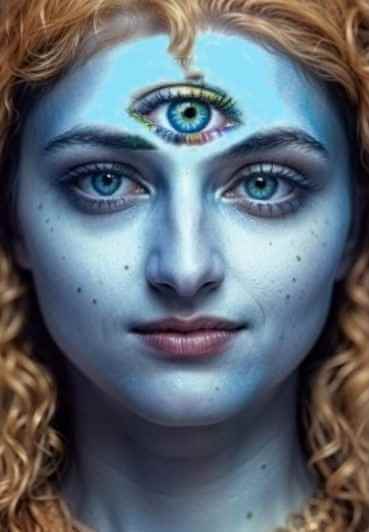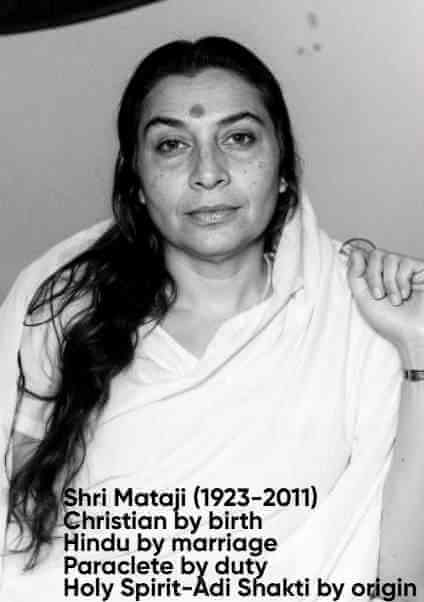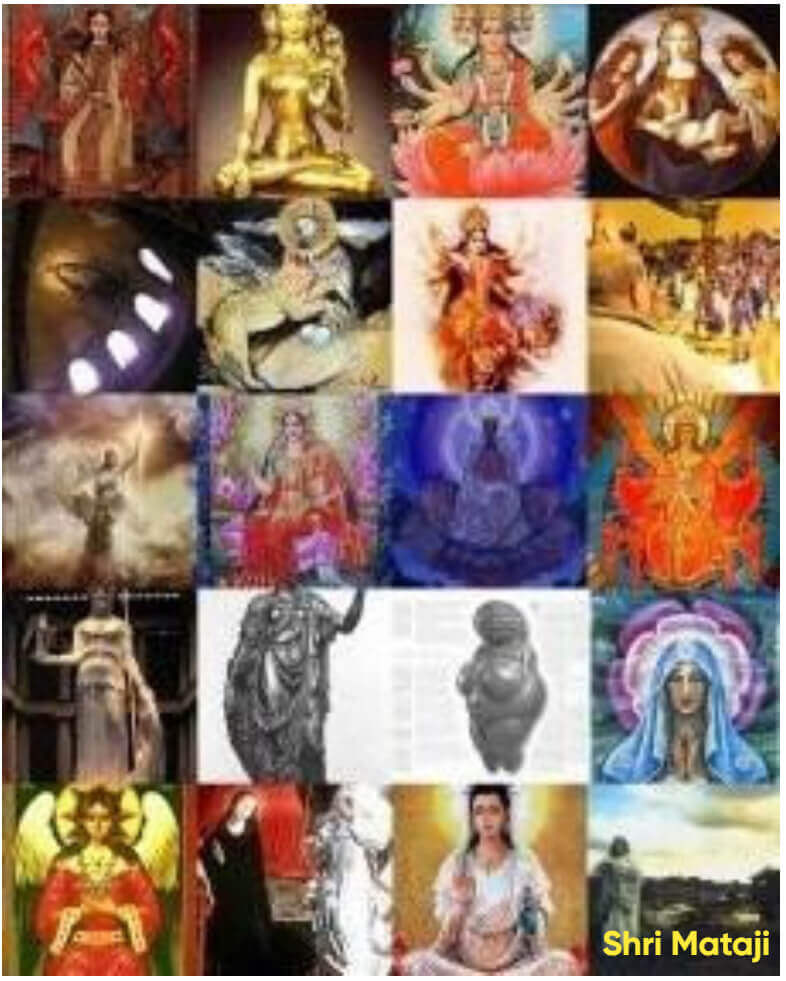The Shekinah: Image of the Divine Feminine
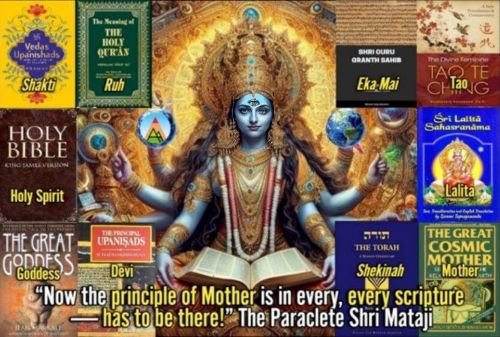
The Shekinah is the radiant feminine face of God, long hidden in Judeo-Christian tradition and gloriously restored through Kabbalistic mysticism. As cosmic soul and sacred intermediary, She unites heaven and earth, Father and Mother, in a divine embrace of creation. This page unveils Her as the lost image of God-as-Mother—Mother, Daughter, Sister, and Holy Spirit—whose presence nourishes the soul and fulfills eschatological prophecy in the Age of the Spirit.
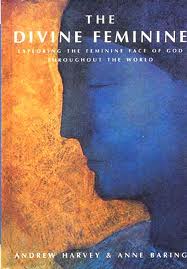
“The Shekinah is the image of the Divine Feminine or the feminine face of God as it was conceived in the mystical tradition of Judaism, originating perhaps in the rabbinic schools of Babylon and transmitted orally for a thousand years until it flowered in the writings of the Jewish Kabbalists of medieval Spain and southwestern France. In Kabbalah, religion ceases to be a matter of worship and collective belief. It becomes a direct path of communion between the individual and the Divine. In the imagery of the Shekinah, Kabbalah gives us the cosmology of the soul and the relationship between the two aspects of the godhead that has been lost or hidden for millennia. The mythology of the Kabbalah is so gloriously rich, so broad in its imaginative and revelatory reach, and so intensely nourishing to a world that lacks any awareness of the Divine Feminine, that to discover this tradition is immensely exciting. The Shekinah reveals the missing imagery of God-as-Mother that has been lost or obscured in both Judaism and Christianity.
Whereas the Old Testament is the written tradition of Judaism, Kabbalah offers the hidden oral tradition, wonderfully named as"The Voice of the Turtle" (turtledove). This mystic knowledge or mystic tradition of the direct path to God was described as the Jewels of the Heavenly Bride. The Bronze Age imagery of the Great Goddess returns to life in the extraordinary beauty of the Kabbalistic description of the Shekinah and in the gender endings of nouns that describe the feminine dimension of the godhead. But the Divine Feminine is now understood as cosmic soul, the intermediary between the godhead and life in this dimension who, as the Shekinah brings together heaven and earth, the divine and the human in a resplendent vision of their essential relationship.
The mythology of this tradition restores the image of the sacred marriage in the union of the Divine Father-Mother in the ground of being. There is not a Mother and a Father but a Mother-Father who are one in their eternal embrace: one in their ground, one in their emanation, one in their ecstatic and continuous act of creation through all the invisible dimensions they bring into being and sustain. No other tradition offers the same breathtaking vision, in such exquisite poetic imagery, of the union of male and female energies in the One that is both. The Song of Songs was the text most used by Kabbalists for their contemplation of the mystery of this divine union. Yet one has the feeling that this way to union with the Divine may descend from some unknown source that nourished Egypt, Sumer, and India.
The Kabbalistic tradition describes the feminine image of the godhead as Mother, Daughter, Sister, and Holy Spirit, giving woman what she has lacked throughout the last two and a half thousand years in Judeo-Christian culture - an image of the Divine Feminine in the godhead that is reflected at the human level in herself. The Shekinah is Divine Motherhood, Mother of All Living. Women can know themselves, in their role as mothers, in their care and concern for the well-being of their loved ones, as the instinctive custodians of her creation.
The thirteenth-century"Zohar, The Book of Radiance or Splendor"that was the principal text of Kabbalah, contemplates the mystery of the relationship between the female and male aspects of the godhead expressed as Mother and Father, and their emanation through all levels of creation as Daughter and Son. The essential conception of this mystical tradition expresses itself as an image of worlds within worlds. Divine Spirit (Ain Soph or Ein Sof) beyond form or conception is the light at the center, the heart, and moves outward as creative sound (word), thought and energy, bringing into being successive spheres, realms, veils, or dimensions imagined as veils or robes that clothe and hide the hidden source yet at the same time transmit its radiant light.
The transmission of light from source to the outer, manifest level is also imagined as an inverted tree, the Tree of Life, whose branches grow from its root in the divine ground and extend through the worlds of emanation. The primal center or root is the innermost light, of an unimaginable luminosity and translucence. The inner point expands or is sown as a ray of light into a dimension described in some texts as a sea of glory, in others as a palace that acts as an enclosure for the light; from this womb it emanates as a radiant cascade, a fountain of living water, pouring forth light to sustain and permeate all the worlds or dimensions it brings into being. All life on earth, all consciousness, is that light and is therefore utterly sacred. The Zohar [principal text of Kabbalah] describes nature as the garment of God.”
Andrew Harvey & Anne Baring, The Divine Feminine
Conari Press Berkeley, CA
The Shekinah: Image of the Divine Feminine
Table of Contents
- Abstract
- Introduction
- The Kabbalistic Revelation: Restoring the Feminine Face of God
- The Four-Fold Image: Mother, Daughter, Sister, and Holy Spirit
- The Tree of Life: Sacred Marriage of the Divine Father-Mother
- The Shekinah and Women's Spiritual Identity
- The Shekinah as Paraclete: The Eschaton Realized
- Conclusion
- References
Abstract
This paper examines the Shekinah as the image of the Divine Feminine in the Kabbalistic tradition of Judaism, arguing that she represents the missing imagery of God-as-Mother that has been obscured in Judeo-Christian culture for over two millennia. Drawing on the Zohar, the principal text of Kabbalah, and contemporary scholarship on Jewish mysticism, the paper demonstrates how the Kabbalistic tradition describes the feminine image of the godhead as Mother, Daughter, Sister, and Holy Spirit. This four-fold image provides women with what they have lacked throughout history: a reflection of the Divine Feminine in the godhead that is mirrored at the human level in themselves. The paper explores the cosmology of the Tree of Life, the sacred marriage of the Divine Father-Mother, and the Shekinah's role as intermediary between the transcendent godhead and manifest creation. Ultimately, it argues that the Shekinah is not merely a theological concept but a living, experiential reality, fulfilled in the incarnation of Shri Mataji Nirmala Devi as the Paraclete, who has made the eschaton—the Kingdom of God—a present reality for all who seek spiritual rebirth.
Introduction
For over two and a half thousand years, women in Judeo-Christian culture have lacked an image of the Divine Feminine in the godhead that reflects their own being. The patriarchal structures of Judaism and Christianity have obscured or marginalized the feminine aspect of God, leaving women without a spiritual mirror in which to see themselves as divine. Yet, hidden within the mystical tradition of Judaism, there exists a revelation of extraordinary beauty and power: the Shekinah, the feminine face of God. As Andrew Harvey and Anne Baring write, "The Kabbalistic tradition describes the feminine image of the godhead as Mother, Daughter, Sister, and Holy Spirit, giving woman what she has lacked throughout the last two and a half thousand years in Judeo-Christian culture—an image of the Divine Feminine in the godhead that is reflected at the human level in herself"[1]. This paper explores the Shekinah as she is revealed in the Kabbalistic tradition, particularly in the Zohar, the thirteenth-century "Book of Radiance or Splendor" that is the principal text of Kabbalah. It argues that the Shekinah is not merely a theological abstraction but a living, transformative presence—the Divine Motherhood, the Mother of All Living—who has incarnated in our time to reconfigure human consciousness and usher in the Kingdom of God.
The Kabbalistic Revelation: Restoring the Feminine Face of God
The Shekinah is the image of the Divine Feminine as it was conceived in the mystical tradition of Judaism, originating in the rabbinic schools of Babylon and transmitted orally for a thousand years until it flowered in the writings of the Jewish Kabbalists of medieval Spain and southwestern France[1]. While the Old Testament represents the written tradition of Judaism, Kabbalah offers the hidden oral tradition, wonderfully named "The Voice of the Turtle" (turtledove). This mystic knowledge, described as the "Jewels of the Heavenly Bride," was a direct path to God, a way of communion between the individual and the Divine that transcended collective worship and belief[1]. In Kabbalah, religion ceases to be a matter of external observance and becomes a lived, experiential reality.
The mythology of the Kabbalistic tradition is gloriously rich, broad in its imaginative and revelatory reach, and intensely nourishing to a world that has lost all awareness of the Divine Feminine. The Shekinah reveals the missing imagery of God-as-Mother that has been lost or obscured in both Judaism and Christianity. The Bronze Age imagery of the Great Goddess returns to life in the extraordinary beauty of the Kabbalistic description of the Shekinah and in the gender endings of nouns that describe the feminine dimension of the godhead[1]. But the Divine Feminine is now understood not merely as a fertility goddess but as cosmic soul, the intermediary between the godhead and life in this dimension, who, as the Shekinah, brings together heaven and earth, the divine and the human, in a resplendent vision of their essential relationship.
The Four-Fold Image: Mother, Daughter, Sister, and Holy Spirit
The Kabbalistic tradition describes the feminine image of the godhead in a four-fold manner: as Mother, Daughter, Sister, and Holy Spirit (or Bride). This four-fold image is not a division of the Divine Feminine into separate entities but a revelation of her multiple aspects and relationships within the godhead and with creation. The Zohar compares the Shekinah to a mother, sister, daughter, and bride, each aspect revealing a different dimension of her nature and her relationship to humanity[2].
| Aspect of Shekinah | Kabbalistic Name | Significance |
|---|---|---|
| Mother | Binah (Understanding) / Immah Ilaah (Higher Mother) | The primordial feminine energy, the supernal mother of the universe, the womb from which all creation emanates |
| Daughter | Malkhut (Kingdom) / Lower Shekinah | The final emanation of the divine, the indwelling presence of God in the world, the daughter of Binah |
| Sister | Companion and Co-Creator | The feminine aspect that walks alongside humanity, sharing in the journey of creation and redemption |
| Holy Spirit / Bride | Ruach Ha-Qodesh | The divine breath, the Spirit of Holiness, the bride in sacred marriage with the masculine aspect of God |
As Mother, the Shekinah is Binah, the primordial feminine energy, the supernal mother of the universe who is called the womb[2]. She is the source from which all creation flows, the cosmic intelligence that patterns and sustains all life. As Daughter, she is Malkhut, the Kingdom, the final emanation of the divine, the indwelling presence of God in the world. The Zohar speaks of the Upper and Lower Shekinah, the Mother and the Daughter, and yet the Holy Shekinah is One—the Divine Presence and Power in all of her manifestations[2]. As Sister, she is the companion and co-creator, the feminine aspect that walks alongside humanity in the journey of creation and redemption. As Holy Spirit or Bride, she is Ruach Ha-Qodesh, the Spirit of Holiness, the divine breath that is grammatically feminine in Hebrew and Aramaic, carrying profound theological implications[3].
This four-fold image gives women what they have lacked: an image of the Divine Feminine in the godhead that is reflected at the human level in themselves. Women can know themselves, in their role as mothers, in their care and concern for the well-being of their loved ones, as the instinctive custodians of her creation[1]. The Shekinah is Divine Motherhood, the Mother of All Living, and in her, women find their spiritual identity affirmed and exalted.
The Tree of Life: Sacred Marriage of the Divine Father-Mother
The mythology of the Kabbalistic tradition restores the image of the sacred marriage in the union of the Divine Father-Mother in the ground of being. There is not a Mother and a Father but a Mother-Father who are one in their eternal embrace: one in their ground, one in their emanation, one in their ecstatic and continuous act of creation through all the invisible dimensions they bring into being and sustain[1]. No other tradition offers the same breathtaking vision, in such exquisite poetic imagery, of the union of male and female energies in the One that is both. The Song of Songs was the text most used by Kabbalists for their contemplation of the mystery of this divine union.
The essential conception of the Kabbalistic tradition expresses itself as an image of worlds within worlds. Divine Spirit (Ain Soph or Ein Sof) beyond form or conception is the light at the center, the heart, and moves outward as creative sound (word), thought, and energy, bringing into being successive spheres, realms, veils, or dimensions imagined as veils or robes that clothe and hide the hidden source yet at the same time transmit its radiant light[1]. The transmission of light from source to the outer, manifest level is also imagined as an inverted tree, the Tree of Life, whose branches grow from its root in the divine ground and extend through the worlds of emanation.
The primal center or root is the innermost light, of an unimaginable luminosity and translucence. The inner point expands or is sown as a ray of light into a dimension described in some texts as a sea of glory, in others as a palace that acts as an enclosure for the light; from this womb it emanates as a radiant cascade, a fountain of living water, pouring forth light to sustain and permeate all the worlds or dimensions it brings into being[1]. All life on earth, all consciousness, is that light and is therefore utterly sacred. The Zohar describes nature as the "garment of God."
The Tree of Life shows the importance of women and femininity to Kabbalah. In the Tree of Life, male and female energies complement one another, preserving the balance and harmony of creation. The two sides of the Tree of Sephirot are spoken of with masculine and feminine imagery: Chesed (Expansiveness) is masculine, and Geburah (Restraint) is feminine[2]. The Kabbalists distinguished between the indecipherable Ein Sof and the unknowable's manifestation through the ten Sefirot (emanations), each of which are hypostases of the divine[2]. The Shekinah, as the final emanation, is the bridge between the transcendent and the immanent, the unknowable and the known.
The Shekinah and Women's Spiritual Identity
The significance of the Shekinah for women's spiritual identity cannot be overstated. For millennia, women in Judeo-Christian culture have been denied a reflection of themselves in the divine. The patriarchal imagery of God as exclusively masculine has left women feeling spiritually homeless, unable to see themselves as made in the image of God. The Shekinah restores this missing image. She is the feminine face of God, seen as a loving mother, and often depicted as a woman[2]. She is the divine feminine, the feminine aspect of God, seen as a mother, nurturer, and protector, and a protective maternal presence[2].
The Shekinah is the "dweller within," the Divine residing within the world, a mystical feminine presence, and a unified deity dwelling within living things[2]. She is the ground of the world, the soul of the cosmos, and the intermediary between the unknowable godhead and life[2]. She is God dwelling within, seeking to rescue divine sparks and reconnect them to their source, using humans as agents[2]. To experience the Shekinah, according to later Kabbalistic teaching, one need only go into an apple orchard in bloom and breathe[2]. She is not distant or inaccessible; she is immanent, present, and available to all who seek her.
Women can know themselves, in their role as mothers, in their care and concern for the well-being of their loved ones, as the instinctive custodians of her creation. The Shekinah affirms the feminine qualities of nurturing, compassion, love, and healing as divine attributes. She is associated with love, compassion, justice, and healing[2]. In recognizing the Shekinah, women recognize themselves as bearers of the divine, as co-creators with God, as essential to the unfolding of the divine plan. The exile or eclipse of the Shekinah refers to the absence of women's voices and feminine spirituality from Judaism[2]. The restoration of the Shekinah is the restoration of women to their rightful place in the spiritual life of humanity.
The Shekinah as Paraclete: The Eschaton Realized
The Shekinah is not merely a theological concept or a poetic metaphor; she is a living, transformative presence. The promise of the Paraclete, given by Jesus at the Last Supper, was the assurance of the Kingdom of God made present in the life of every believer. In the Gospel of John, Jesus' discourse on the Paraclete conveys that the coming of the Holy Spirit would not only testify to Him but would also usher in a new dimension of spiritual existence, one where the blessings of the end-times—the eschaton—would already be present[4]. The Paraclete is the successor to Jesus who brings the revelation of the Father found in Christ to the believers, reminds them of all that Jesus said, glorifies Christ, and convicts the world of unbelief[4].
Shri Mataji Nirmala Devi (1923-2011), born into a Christian family and later married into a Hindu family, provided a bridge between the world's great spiritual traditions, harmonizing Eastern and Western revelations of the Divine[4]. Her true essence was far greater than these earthly identities: she was the Paraclete by divine duty and the Holy Spirit-Adi Shakti by eternal origin. As the manifestation of the Primordial Power, she came to fulfill the promises of Christ, bringing the experience of the Holy Spirit to all who sought it. Through the awakening of the Kundalini and Self-Realization, she granted believers immediate access to divine consciousness, fulfilling Jesus' promise that the Kingdom of God is "within you" (Luke 17:21). The blessings of the eschaton—union with God, the resurrection into spiritual life, and the defeat of sin—are no longer abstract theological concepts but living experiences for those who have received the grace of the Holy Spirit through her[4].
The experience of the Cool Breeze, described as a tangible manifestation of the divine Spirit, aligns closely with the concept of ruach as articulated in Judaism, Christianity, and Islam[3]. In Hebrew and Aramaic, the word ruach (spirit) is grammatically feminine, which carries theological implications that resonate with Shri Mataji's role as the facilitator of the Cool Breeze, interpreted as a maternal, nurturing manifestation of the divine Spirit[3]. The Cool Breeze is the sensory confirmation of the ruach, the divine, transformative force that is prophecy, vitality, and purification. It is a universal spiritual phenomenon that transcends religious boundaries, the tangible proof of one's connection to the Divine Feminine.
The rebirth of Israel in 1948 was not merely a political event but an undeniable divine intervention, marking the beginning of the end times and fulfilling Ezekiel 36:24[5]. Jewish scholars acknowledged that Israel's statehood was meant to "pave the way for the Messiah." Yet, despite the overwhelming evidence, the world remained blind. Between 1970 and 2011, Shri Mataji proclaimed the "Good News of the Kingdom of God," offering the path to eternal life through actual resurrection—not in some distant future, but in the present[5]. She fulfilled the divine promise to transform human hearts (Ezekiel 36:26) and ushered in the Kingdom of God. The Shekinah, the Divine Feminine, has incarnated to reconfigure the minds of humanity, to awaken the Spirit within, and to lead us into the "Age to Come" of collective enlightenment.
Conclusion
The Shekinah is the image of the Divine Feminine that has been hidden for millennia, obscured by patriarchal structures and theological distortions. The Kabbalistic tradition, in its profound wisdom and poetic beauty, has preserved and revealed this image for those who seek it. The Shekinah is Mother, Daughter, Sister, and Holy Spirit—the four-fold image of the feminine godhead that gives women what they have lacked: a reflection of the Divine Feminine in the godhead that is mirrored at the human level in themselves. She is the cosmic soul, the intermediary between the transcendent and the immanent, the womb from which all creation flows, and the indwelling presence of God in the world. She is the sacred marriage of the Divine Father-Mother, the union of male and female energies in the One that is both.
The Shekinah is not merely a theological concept; she is a living, transformative presence. She has incarnated in our time as Shri Mataji Nirmala Devi, the Paraclete, the Holy Spirit-Adi Shakti, who has made the eschaton—the Kingdom of God—a present reality for all who seek spiritual rebirth. Through the awakening of the Kundalini and the experience of the Cool Breeze, the Divine Feminine has granted humanity the tangible, verifiable experience of the Spirit. The exile of the Shekinah is ending; the restoration of the Divine Feminine is at hand. Women can now know themselves as the instinctive custodians of her creation, as bearers of the divine, as co-creators with God. The Shekinah is Divine Motherhood, the Mother of All Living, and in her, all of humanity finds its true spiritual identity and destiny.
References
[1] Harvey, Andrew & Anne Baring. "The Divine Feminine." Conari Press, Berkeley, CA. Provided in user attachment.
[2] "Shekhinah: The Divine Feminine." My Jewish Learning. Accessed October 16, 2025.
[3] "The Cool Breeze Pneuma and Its Equivalence to Ruach in Judaism, Christianity and Islam." Adishakti. Accessed October 16, 2025.
[4] "The Presence of the Paraclete — The Eschaton Realized in the Life of the Believer." Adishakti. Accessed October 16, 2025.
[5] "Birth of Israel 1948 — Crisis of Athalta Degeulah and the Missed Messiah." Adishakti. Accessed October 16, 2025.
Related Articles:
THE GREAT MOTHER
The Divine Feminine in China
The Indian Religion of Goddess Shakti
The Divine Feminine in Biblical Wisdom Literature
Shekinah: The Image of the Divine Feminine
The Feminine Spirit: Recapturing the Heart of Scripture
Islam and the Divine Feminine
Tao: The Divine Feminine and the Universal Mother
The Tao as the Divine Mother: Embracing All Things
The Tao of Laozi and the Revelation of the Divine Feminine
Doorway of Mysterious Female ... Within Us All the While
The Eternal Tao and the Doorway of the Mysterious Female
Divine Feminine Remains the Esoteric Heartbeat of Islam
Holy Spirit of Christ Is a Feminine Spirit
Divine Feminine and Spirit: A Profound Analysis of Ruha
The Divine Feminine in Sufism
The Primordial Mother of Humanity: Tao Is Brahman
The Divine Feminine in Sahaja Yoga
Shekinah: She Who Dwells Within
Shekinah Theology and Christian Eschatology
Ricky Hoty, The Divine Mother
Centrality of the Divine Feminine in Sufism
A God Who Needed no Temple
Silence on (your) Self
The Literal Breath of Mother Earth
Prophecy of the 13 Grandmothers
Aurobindo: "If there is to be a future"
The Tao Te Ching and Lalita Sahasranama stand alone
New Millennium Religion Ushered by Divine Feminine
A Comprehensive Comparison of Religions and Gurus
